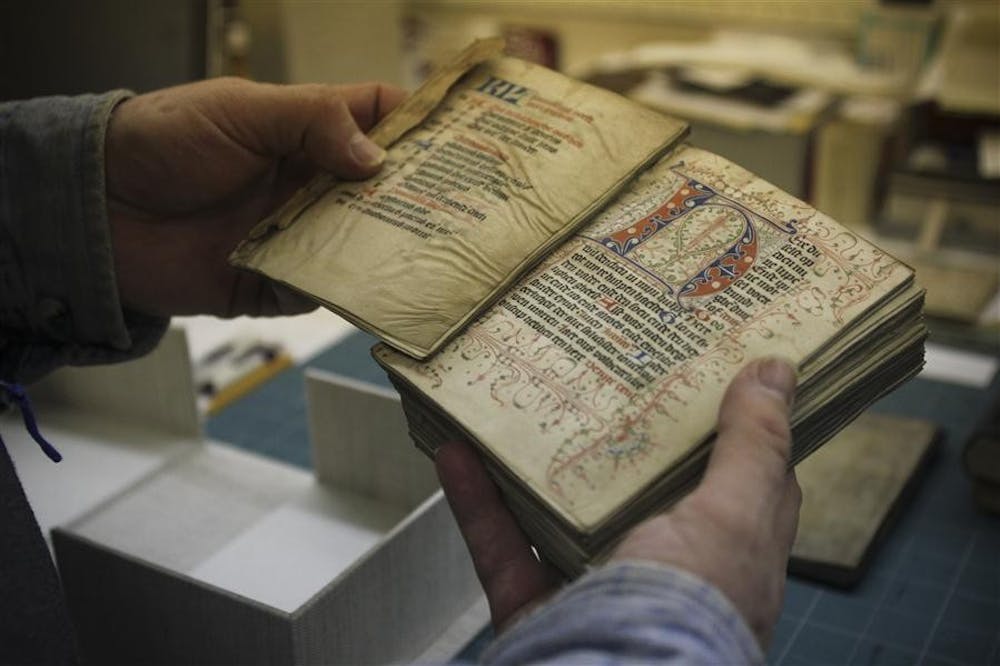On the sixth floor, in a room that is precisely 68 degrees Fahrenheit with 47 percent humidity, Jim Canary is bent over a book of hours — a type of prayer book — hand-written and illustrated in the 15th century. He cleans two 600-year-old pieces of leather.
As head of conservation at the Lilly Library, Canary has worked for 26 years fighting the decay of the 450,000 books and 7.5 million manuscripts stored at the library.
Here are just some of the techniques and tactics the Lilly Library takes to restore these books.
Light
The ultraviolet component of light can cause books’ fibers to become brittle or their dyes and inks to fade. Five foot-candles is the ideal amount of lighting the Lilly uses for documents in iron gall ink or hand-colored illustrations, which are especially susceptible to fading. A foot-candle is a unit of measurement equal to the light produced by one candle from one foot away.
Pages
To clean stains, a book can be de-acidified, or alkalized, by applying an alkaline solution to a dry page or submerging it in an alkaline solution bath.
Re-binding
Japanese tissue is a thin paper that is dyed using acrylics or watercolors and pasted on the outer or inner binding depending on what’s necessary. It can be used on leather, cloth, paper or vellum.
Storage
Any books that seem loose or fragile are kept in a handmade box or “clam shell.” Anything less than half-an-inch thick is kept in an envelope.
When in use
Books must be kept in the designated Reading Room. Inside, they are placed atop cushions that support each tome’s spine and binding. Instead of having patrons hold down a page with their hands, strings with weights are used.
Preservation and access are key values in the library’s functionality.
“We still are a functioning library,” Canary said. “Books are meant to be used.”






